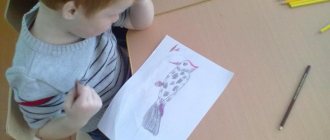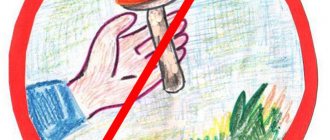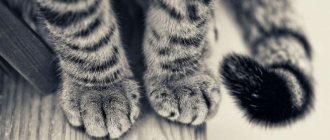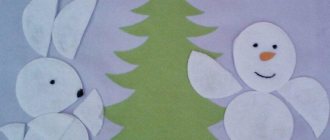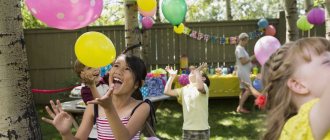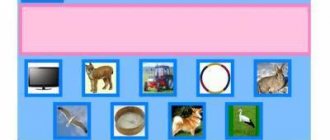Goals and objectives of logorhythmics
Classes can be individual or group. In speech therapy, speech and motor forms of development are considered interrelated. Movements performed in a certain rhythm are easy to remember. It is easy to build speech rhythm on their basis. By moving and at the same time pronouncing phrases at the same pace, the child learns to speak clearly and beautifully.
The goal of logorhythmics is the prevention and correction of speech defects, physical and psycho-emotional development.
Tasks:
- correction of speech disorders;
- improved breathing;
- improvement of articulation, phonemic hearing;
- improved coordination of movements;
- expansion of individual vocabulary;
- developing interest in music as a cultural phenomenon;
- development of memory, concentration, ability to navigate in space;
- improving the sense of rhythm;
- expanding ideas about the world around us;
- stimulation of speech activity.
Which activity to choose depends on the problem the child has. If it is stuttering, rhythm and breathing exercises should be predominant. And if a preschooler finds it difficult to reproduce certain sounds, then articulation classes become mandatory.
Theme of the logorhythmic lesson: “In the autumn forest”
Non-speech goals:
- development of coordination of movements, orientation in space;
- development of auditory perception, attention, memory;
- developing the ability to work in a team of peers;
- development of a sense of rhythm and ear for music;
- development of creative thinking;
- normalization of muscle tone.
Speech goals:
- development of speech breathing and voice formation;
- development of facial and articulatory motor skills;
- synchronization of speech with movement;
- development of prosodic components;
- activation of the dictionary on lexical topics “Autumn”, “Forest”, “Trees”, “Wild Animals”.
Equipment: plot painting “Autumn Forest”; toy trees; dummies of mushrooms (or object pictures); fairy-tale characters - hedgehog, bear; wooden spoons, rattles, technical means for playing music.
What is included in logorhythmics
Logorhythmics classes in preschool include:
- different types of physical activity - walking, squats, jumping, dancing, clapping, waving your hands - such exercises are usually used as a warm-up;
- speech correction methods;
- articulation gymnastics, breathing exercises;
- singing, reading poetry, saying tongue twisters;
- finger gymnastics;
- games to develop concentration, auditory and visual perception, memory;
- exercises to improve facial expressions, strengthen the facial and jaw muscles;
- relaxation exercises that usually end classes.
Rules for conducting classes in logorhythmics
Logorhythmics implies a playful form that is attractive to children. To increase your preschooler's interest in activities, use toys, illustrations, literary works, musical instruments, audio recordings, unusual objects, puppets and finger puppets.
If a child stutters, he should study every other day. With a healthy preschooler, it is enough to work twice a week.
The pace of exercises during each next lesson should gradually increase as the child successfully completes them. The musical accompaniment must correspond to the tempo of motor activity and the emotional content of the actions.
Don't show your child that you are unhappy with him. Disappointed in himself, he may refuse to do the exercises next time.
Logorhythmics for children 3 years old
3 years of age is a period of active speech development. Therefore, logorhythmics exercises for children should stimulate speech activity, improve thinking abilities, and develop articulation. We also shouldn’t forget about physical activity; outdoor games are required.
Far or near
Explain to children that far away objects make quiet sounds, while close objects make loud sounds. Offer to play animal voices. For example, a dog barks far away - the children say quietly “woof-woof”, a dog barks close - the children say loudly “woof-woof”. Likewise for cats, sheep, cows, roosters, cuckoos, frogs and other animals.
My family
Read the poem, and the students should bend their finger after each line:
- “this finger is grandpa” - kids bend their thumb;
- “this finger is grandma” - index;
- “this finger is daddy” - middle;
- “this finger is mommy” - ring finger;
- “and this finger is me” - little finger;
- “Here is my family” - the children put forward the resulting fist.
Happy tummy
The logorhythmics game is designed to improve breathing through the diaphragm. The preschooler lies on his back, relaxes, and places his favorite toy on his stomach. Ask your child to take a deep breath so that the belly rises and the toy rises with it. Then exhale so that the stomach with the toy drops. Let him repeat the action several times.
Tell me in order
Logorhythmic games develop speech breathing. The child must inhale, then, as he exhales, count the objects in the picture: one, two, three... The number of words spoken while exhaling should correspond to the age of the child.
Articulation gymnastics
Articulation exercises within the framework of logorhythmics tone the muscles of the tongue and jaws. Here are some examples:
- “I’m licking” - the mouth is not wide open, the tongue moves smoothly in a circle over the lips;
- “The teeth are hiding” - the lips are either tightly compressed, or stretched into a wide smile;
- “Football player” - the tongue moves inside the oral cavity from right to left with pressure on the mucous walls;
- “Angry tongue” - the tip of the tongue rests on the back walls of the upper pair of incisors.
Walking
To the accompaniment of music, children walk in a chain, holding the cord with their left hand. First they take the usual steps, the music conveys the appropriate rhythm. Then the pace changes, the players walk about 3 m with an extended step, raising their legs high. At the 3rd stage, children, continuing to move one after another, must step over 5 cubes and steps of a ladder placed on the floor.
Logorhythmics lesson in the middle group of preschool educational institutions
“The cockerel is sick” Logorhythmics lesson for the middle group Tools: Toy - Cockerel, goose, horse, chicken, sticks, hat - Dog, housewife’s handkerchief. Progress of the lesson: We’ll go, let’s go, let’s go, We’ll get into a fairy tale with you. Greet guests. The guests came to us with rhythm, they also want to get into a fairy tale.
The legs walked into a fairy tale along the path... 1. Listening to the voice of the rooster. Who shouted that? He raised the sun. 2. Finger game “Sunshine, sunshine” Sunshine, sunshine, palms together, fingers open, movements on the wrists Look out the window... “window with fingers”
Everyone woke up, Stretched 3. Game poem “Stretchers” Stretches, stretched, arms to the sides Stretches, stretched, arms up And in the hands there are grasping movements, grasping movements And in the legs there are trampling movements. tops And in the mouth - talk, work with the tongue “lick” And in the head - mind. pat themselves on the head
Everyone woke up, stretched... The cockerel began to walk, raising his legs. 4. Musical sketch “Ku-ka-re-ku!” (walking with a high lift of the hip, at the end of the phrase balance on one leg, slaps on the sides “Ku-ka-re-ku!”) 5. Finger play and round dance “The sun has a friend” The sun has a friend - hands up Loud cockerel . comb from the fingers on the head It’s good when, my friend, clap the Voiced Cockerel. scallop and b. p. It’s good when friends join hands and dance in a circle. It’s us, you and me! It’s good when friends stop and shake their clasped hands. It’s us, you and me!
Every morning the cockerel sang his song. But one day the cockerel caught a cold. The rooster fell ill with a sore throat. He won’t sing for the second night. How can we help Petenka? If the cockerel is sick, who will crow in the morning? Maybe a goose? 6. Game of hands “Geese” Ha-ha-ha, ha-ha-ha, We are going for a walk in the meadows!
“Goose” The goose is noisy, walking in a full squat with a long nose. The neck is like a question mark. stretch the neck 6. Imitation of the “Squatting” movement
The goose goes for a walk in the meadows and cackles: Ha-ha-ga.
They went for a walk in the forest. And the hostess began to look for them. 8. Outdoor game “Geese” children sit “hidden” - covering their eyes with their palms Ved. - the hostess in a headscarf - Geese, geese - Ha, ha, ha. Do you want to eat? - Yes Yes Yes. So fly to me! There is food waiting for you in the yard! children-geese fly “to the hostess” (spatial orientation) “The hostess imitates that she is pouring grains for them, the “geese” squat, “peck”, the hostess moves to another place, collect all the grains, and then run to me. the game continues again.
A goose can't crow, maybe a duck can?
The ducks came out into the meadows, walking in a half-squat. Quack-quack-quack! We can't live without Petya, quack-quack-quack!
9. “Ducks” movements (knees together, legs apart) Ducks cannot scream “Cuckoo-ka-re-coo”, No one can replace the rooster, Cue-ka-re-coo scream in the morning. The goose can’t, the duck can’t either, but the dog Barbos wanted to - he overslept. 11. Game with a dog “We are walking quietly...” (children quietly approach the dog with the words: We are walking quietly, And we will come up to the dog. And we will clap our hands... once! (at the same time they clap our hands) The dog will catch up with us! (the dog barks, catches up with the children, they run away to the chairs)
The dog just barks, he doesn’t want to shout ka-ka-re-ku!
Here is a horse running, Maybe it can treat Petya? Music "Horse" movements. (straight gallop)
Games poem. Clack, click, I am a horse with a gray side. I knock with my hooves, I invite you to knock.
Let's take the sticks and start knocking with them. Games with sticks. Ree is loud and quiet. "I jumped, I ran"
A horse cannot scream cuckoo, it can only sing its own song... Which one? e-go-go...
What should we do, what should we do, how should we treat Petya? They called Petya into the room. They put his hands under his cheeks on the bed. They took him out to gargle. Chickens came to Petya and brought milk: “What is the temperature? Drink milk, Petya!”
Petya began to drink milk, he knows that it is healthy.
12. Speech therapy exercise “The cockerel is drinking” (Stretch out the lips (drinks), then “ah-ah-ah” - while exhaling, or throwing his head back “gargles”) The cockerel drank milk He began to get better Walked with the chickens 13. Dance etude “ Chickens' Movements: walking, pecking, circling
14. Play poem “Cockerel, cockerel - golden comb” Petya, Petya, Cockerel, golden comb, Petya gets up early, sings loudly... Ku-ka-re-ku!
The cockerel sang songs again and accompanied us to the group. Exit “The legs walked in a group along the path”
Logorhythmics for children 4 years old
For a 4-year-old child, physical development and improvement of motor skills are of paramount importance. It is also important to teach preschoolers proper communication, beautiful pronunciation, and clear pronunciation of sounds.
Do like the animals
Encourage students to imitate the movements and sounds of different animals. For example, how a bear walks and growls - children answer “rrrr”, while moving in a waddle with clubfoot steps. Or, as a goose flies and screams, the players respond “ha-ha-ha”, while waving their arms widely.
I go, I swim, I fly
When children hear the word “earth,” they stomp on the floor. When they hear the word “water,” they make movements with their hands as if they are swimming. And when they hear the word “air,” they flap their arms like birds in flight.
Vegetables
Show your student illustrations of vegetables, while pronouncing their names clearly in syllables: po-mi-dor, ka-ba-chok, re-dis, ku-ku-ru-za. The child should clap his hands after each syllable he hears.
Feed the birds
To play using logorhythmics, you need to prepare grain, peas and small pebbles, as well as 6 containers. Invite the student to feed the birds that fly to the feeder. To do this, he must transfer the grain, peas and pebbles to another container. First the baby does this with one hand, then with the other, then with both. Then he uses only his fingers: the thumb with the index finger, then with the middle finger, with the ring finger and, finally, with the little finger.
Train
Preschoolers imitate train carriages: they stand one after another, bend their arms at the elbow joint, press them to their sides, and clench their palms into fists. They begin to move to the music in the appropriate rhythm, stomping their feet and at the same time making circular movements with their hands. The tempo of the music changes, following which the children change the speed of their movements.
Automobile
Children answer questions, accompanying their answers with appropriate actions:
- how the car honks - “beep, beep” - the children press their fist on the open palm of their other hand;
- how the engine makes noise - “zh-zh-zh” - they make circular movements with their hands, as if they are steering a steering wheel;
- how fast we drive - “rrrr” - loudly and quickly knocking our feet on the floor;
- how the tires rustle on the asphalt - “sh-sh-sh” - the children rub their palms against one another;
- how the wheels spin - “ta-ta-ta” - make circular movements with your arms in one direction.
Open lesson on logorhythmics in the senior group
Scenario for an open lesson on Logori.
Description of the material: Every year our holding hosts Open Days, the purpose of which is to introduce parents to specialists and teachers of additional education, as well as to the methods used in working with children. We present various areas (artistic and aesthetic, creative, physical education, educational) in the form of master classes and open classes. My circle on musical logorhythmics belongs to the artistic and aesthetic cycle and, thinking through the course of the lesson, I decided to devote it to a conversation about rhythm and ways to develop a sense of rhythm in children. Author: Olga Vasilievna Podkolzina, music director of the State Budgetary Educational Institution “School No. 1056” in Moscow. Goal: To interest parents and children in the subject of logorhythmics. Objectives: introduce rhythm games; show ways to develop a sense of rhythm in a child; create a relaxed gaming atmosphere.
Progress of the event
Guests (parents with children) enter the hall to the music. Musical director: Hello, my friends, I am glad to see you all. Our garden is open to guests, parents and their children. I suggest you stand in a circle and start our fun lesson! (Everyone stands in a circle.)
And before we start, we need to greet each other.
Communication game “Hello, friend!” M.Yu. Kartushina 1. The legs walked (Children and parents move scattered around the hall.)
Straight along the path, They met a friend
(Towards the end of the verse they stand in pairs.)
Little legs.
Chorus: Hello, hello, (Holding hands, couples perform a “spring”)
Hello, dear friend, Hello, hello,
(Do a “spring”).
Look around!
(Spread their arms to the sides).
Hello, hello,
(They make a “spring”).
Smile at me!
(Pretend to smile by raising your hands to your chin.)
Hello, hello,
(They make a “spring”).
Bow your head!
(Bow to each other).
2. The legs ran
(They run on their toes scattered around the hall).
Right along the path, Met a friend
(Get into pairs).
Little feet.
Chorus. (Movements are repeated).
3. The legs jumped
(they move around the hall in jumps, kids jump on two legs).
Right along the path, Met a friend
(By the end of the verse they get into pairs).
Little feet.
Chorus. (Movements are repeated). Musical director: Well, now that we have all said hello, I would like to talk to you a little about logorhythmics, about rhythm in general and how you can play with it. What is logorhythmics? This is a system of motor exercises that are combined with words and music. Most often it is used in correctional pedagogy, as well as to stimulate the speech development of children. Rhythm is not only a musical concept, but also a sense of time in general. A good sense of rhythm helps children better master their native language, because our speech also consists of rhythmic formulas, in which stressed and unstressed syllables constantly alternate. If you transfer them to rhythm, you get an alternation of long and short durations. Let me give you an example. My name is Olga VasIlyevna. I will say my name like this - a long syllable and two short ones (ta-ti-ti), a long syllable and two short ones (ta-ti-ti). Now let's stand in a circle. And we'll read out your names. Game “Tap Your Name” Parents and children stand in a circle and pass the ball to the music. When the music ends, the one with the ball in his hands slaps his name. Musical director: You can also clap any poem familiar to the baby. Does everyone know the poem “Teddy Bear”? Let's try to tap him. The clubfooted bear (Ti-ti-ti-ti-Ta-ti)
is walking through the forest.
(Ti-ti-ti-ti-Ta)
Collects cones,
(Ti-ti-ti-ti-Ta-ti)
Sings songs.
(Tee-ti-ti-ti-Ta)
Suddenly a cone fell
(Ti-ti-ti-Ta-ti)
Right in the bear's forehead,
(Ti-ti-ti-ti-Ta)
The bear got angry
(Ti-ti-Ta-Ti-Ti-Ti-Ta
ti-ti-ta-ti) And stomp with your foot!
(Ti-ti-ti-ti-Ta) Musical director: In the development of children's speech, various finger games, pure tongues, and also speech games with movement are actively used, when all actions are performed in accordance with a given rhythmic pulsation. Here is an example of a pure tongue (you can use any problematic sounds for elaboration). Author's pure phrase [l, r, l', r'] La, la, la, (Children walk rhythmically in place).
Winter has come to us, Ra, ra, ra,
(Clap their hands).
Happy kids.
La, la, la, (Swing their lowered arms from side to side).
White earth, Rya, Rya, Rya,
(They rhythmically clench and unclench their fists, while lowering their hands down).
In the light of a lantern.
Musical director: And now I suggest you play a little more! Rhythmic game for younger preschoolers “Jumping” M.Yu. Kartushina 1. Spending, spending! (Children jump on two legs in all directions.)
Let's start jumping!
Jump and jump, jump and jump! You need to jump on your toes. 2. Spending, spending! (Standing still, clap their hands.)
Let's start the crackers!
Clap-clap, clap-clap! Hit your hands - clap-clap-clap! 3. Spending, spending! (They spin around with a stomping step).
Let's start twirling!
Tra-ta, tra-ta-ta! What a beauty! Musical game for middle-aged and older children “Snowball-Kolobok” M.Yu. Kartushina Children and parents stand in a circle and pass the “snowball” around the circle, rhythmically pronouncing the text.
The one who has “snowball” in his hands at the last words goes out with his mother in a circle and dances. Hello, hello, our snowball, Snowy, white bun!
He rolled along the path, and then stopped. Go out onto the path and dance with the snow! Musical director: And, of course, playing in an orchestra, dancing, and any musical rhythmic movements wonderfully develop a sense of rhythm. Let's take our instruments and imagine that we are real musicians. Participants in the meeting take the proposed instruments and perform the proposed piece in the orchestra. Orchestra (at the choice of the music director)
Musical director: And at the end of our meeting, I propose a fun dance. Communicative dance for demonstration (at the choice of the music director) Music director: Our meeting today has come to an end. I hope everyone found it interesting. They played with you happily and didn’t get bored at all, But the time has come to say: “Goodbye! Good morning!" Children and parents leave the hall.
We recommend watching:
The use of ICT in correctional work with preschoolers Summary of GCD in the junior group on logorhythmics Music lesson in the senior group “Spring melodies and sounds” Logorhythmic lessons in kindergarten in the senior group on the lexical topic “Autumn”
Similar articles:
Walk “Wind Watching” in the senior group
Observation in the senior group of kindergarten. It's frosty outside
Logorhythmics for children 5 years old
Logorhythmics notes for middle group preschoolers should include active games aimed at physical development and recovery. The movements become more complicated, complemented by other different actions, and the load becomes more intense. Classes should develop flexibility, promote healthy posture, and improve creativity.
Tell a friend
Logorhythmics games develop concentration and reaction speed. The players stand in pairs opposite each other. In the hand of one is a skittle, the other has a ring from a toy pyramid. When the music starts, the transfer of objects begins: one player takes the pin from the second with his right hand, and gives the ring with his left, and so on in a circle.
Cooking cabbage
Tell the poem, performing actions corresponding to the plot, and the child must repeat them:
- “We chopped the cabbage” - the baby makes chopping movements with his hands;
- “We salted the cabbage” – folds his fingers, moves them as if pouring salt;
- “We crushed the cabbage” - makes squeezing and squeezing movements with his hands;
- “We got delicious food” - claps his hands.
What rang
Show the pupils 4 objects: wooden spoons, a rattle, a glass cup, a metal bell. Ring the objects, hide them. Ring them again from the hiding place. Children must guess what is ringing.
Zoo
Divide the players into 4 groups: hares, bears, zebras, parrots. To the accompaniment of music, children move, imitating animals: “hares” jump, “bears” waddle, “zebras” raise their legs high above the floor, “parrots” wave their arms.
Geese
Logorhythmic games improve motor skills. The pupils’ task is to reproduce the actions of birds according to the rhyme:
- “The geese have arrived” - children wave their arms and run on tiptoe;
- “sat down on the lawn” - squat down;
- “walked” - players get up, slowly walk on tiptoe;
- “pecked” - they stop and bend down;
- “and quickly ran away” - the players run to their chairs and sit on them.
Summary of logorhythmic lesson in the middle group
Summary of a logorhythmic lesson in the middle group “Visiting Masha”
Author: Victoria Aleksandrovna Vagner, teacher of additional education MBUDO DDT named after. A. I. Efremova TRC “Tumblers” Description of the material: This lesson summary, in my opinion, will be of interest to teachers, educators and speech therapists who work with children of middle preschool age in a preschool educational institution. Goal: Prevention of speech and motor disorders in children of middle preschool age, through the child’s adaptation to the conditions of the external and internal environment. Objectives: • Development of phonetic hearing and articulatory apparatus; • Development of auditory attention; • Development of fine motor skills and gross; • Formation of coordinated movements in conjunction with speech; • Education of ethical standards of behavior. Equipment: toys: fox, squirrel, Masha doll toy, crib, bell, drum, bus steering wheel. Material and technical support for the lesson: tape recorder
Progress of the lesson.
Children enter the hall to the music of “Viennese Waltz” by G. Sviridov and form a large circle. Teacher: Hello guys, look who came to visit us?! (children's answers)
That's right, this is a doll, and her name is Masha.
Let's all say hello to Masha (the teacher brings the doll to each child, everyone says “Hello Masha”). Teacher: Guys, Masha invites us all to visit. Who wants to ride with us on the magic bus? (children's answers, the teacher puts the children on the bus) Children ride on the bus (the driver has the steering wheel) along the way the children change. to the musical accompaniment of Sergei and Ekaterina Zheleznov “Bus” Teacher: Guys, let’s see who lives with Masha. (children say hello to the fox and the squirrel) Prepare your palms and put your fingers together. Finger game “Our fingers!”
Hello, bunny!
Hello, bear! Hello, squirrel! Chanterelle! We live in the same forest - On the lawn and meadow! Teacher: Guys, look what a friendly family Masha has. Let's show Masha and her friends how we can play with our fingers. We have prepared our pen and will bend one finger at a time, starting with the thumb. Finger game “Family”
This finger is grandpa, This finger is grandma, This finger is dad, This finger is mom, This finger is me, That’s my whole family!
Teacher: Oh, what great fellows you all are, it’s so good that you warmed up our hands, and now let’s show the doll Masha how we play with our legs! Musical game “We are top-top with our feet” by E.S. Zheleznova; S.S. Zheleznov. Teacher: Guys, Masha knows a lot of interesting stories, and now she will tell you one of the tales about a funny tongue. Let's all go to the mirror and listen carefully to Masha's story. Articulation gymnastics.
The Tale of a Merry Tongue. Beyond the tall forests, beyond the deep seas, there lived a cheerful boy named Tongue.
He always woke up very, very early, and the first thing he did was smile at everyone around him, and stretched high, trying to reach the sky. He comes to the window, opens it wide and wide and looks out into the street. Tongue looked around, looked up at the sun, looked down at the flowers and grass. Everyone will be greeted and jump into the yard. Teacher: Oh, how great everyone is, Masha also prepared an interesting game for us. Let's play with you. Let's check which of you is the most attentive. You need to listen to music, if there is cheerful music, we run around the hall, if it becomes quiet, the music is not playing, then we all sit on the rug and sit quietly, and Masha will check who is the most attentive. Game for attention “The most attentive”. Teacher: Guys, how attentive you all are, Masha didn’t catch anyone. Teacher: And Masha also loves to play hide and seek, but it’s not you and me who will be hiding, but a bell and a drum. Let's all stand in a semicircle, close our eyes and listen carefully to what the object sounds like. Game for the development of phonemic hearing “Hide and Seek” Teacher: Guys, you are all such good guys, you quickly guessed all the sounds. Teacher: Well, now it’s time for Masha to go to bed, she had a lot of fun with us, let’s all say goodbye to Masha. Children say goodbye to the doll.
We recommend watching:
Synopsis of correctional and developmental activities for preschoolers with visual impairments Synopsis of a game lesson in the middle group Synopsis of an art lesson using non-traditional methods of drawing in the middle group Synopsis of a logorhythmic lesson in the senior group
Similar articles:
Summary of a drawing lesson in the middle group
Summary of a comprehensive lesson in the middle group “Spring in the Village”
Summary of GCD in the senior group on the topic “So that your teeth don’t hurt”
Summary of GCD in the middle group on the topic “Journey to the autumn forest”
Summary of GCD in the middle group on the topic: “So summer is over”
For children 6 years old
From the age of 6, preschoolers are already preparing for school; logorhythmic exercises become more complex. At this age, it is important to develop rhythm, intonation, clarity of speech, the ability to express emotions, and broaden your horizons.
Living-non-living
Say the words, and the children should clap their hands when they hear the name of a living and small creature. For example: bee, telephone, pencil, mosquito, hippopotamus, giraffe, ant, grasshopper, ball, chick, button, dragonfly, window, horse, snail.
Find out the animal
Players must depict the given animals using facial expressions and body movements. For example, an important turkey, a cowardly rabbit, a slow turtle. And the rest must guess who the friend is showing.
Journey
Tell the students that they will now go traveling using different types of transport. First, in the car - the children pronounce the drawn-out sound “r-r-r”. Then on the plane - “oooh”. The plane is descending - the children pronounce the sound more quietly. The journey continues on the train - “too-too-oo-oo”. The train is moving fast - “chug-chug-chug”. Approaching the station, it slows down - the children say “chuh-chuh” more slowly. The train stopped, steam came out from under the wheels - “sh-sh-sh”. Then the journey continues on horseback - the children make a clicking sound with their tongue.
Find out by facial expressions
Children take turns naming interjections and using facial expressions to depict the corresponding emotion. The rest of us have to guess what we're talking about:
- Oh! - astonishment;
- Oh! - pain;
- Ay! – fear;
- Eh! – fun;
- Hey! - discontent;
- Oh! – confusion.
Preparatory group. Senior preschool age. Children 6-7 years old
Summary of the open educational activity "Theatricalization based on the fairy tale "Kolobok" with elements of logorhythmics" for children 6-7 years old with ODD level 3. Summary of the open (NOD)
lesson "Theatricalization based on the fairy tale "Kolobok" with elements of logorhythmics " for children 6-7 years old with ODD (OSD 3 )
Goal: improvement of coherent speech in school-preparatory children with ODD through theatrical activities based on theatrical...
“We’re going to visit Mishka.” Summary of an integrated lesson with elements of logorhythmics for the preparatory group “Let’s go to visit Mishka”
(Summary of an integrated
lesson with elements of logorhythmics for the preparatory group. Teacher-speech therapist : Taraba L.A. Musical director: Zhukova I.I. Goal: Formation of the ability to sense rhythmic expressiveness in music, movement and speech, development...
For children 7 years old
At the age of 7, preschoolers can perform complex tasks in logarithmics.
What animal is this
One player moves to the music, depicting a specific animal with body movements, facial expressions and sounds. When the music stops, it freezes. The rest must guess what animal he was depicting.
Signalman
Make 3-4 claps with your palms in different rhythms, like Morse code. And the student must repeat them in the same rhythm. For example: 3 fast, 1 slow.
Mirror
To play musical logorhythmics, prepare pictures of people in different poses. Turn on the music and let the kids dance. As soon as the melody is interrupted, the players must take the pose of the person depicted in the displayed image.
Logorhythmics by Zheleznova for children
Teacher Ekaterina Zheleznova has developed a unique logorhythmics program for preschoolers of all age groups. Classes involve simultaneous performance of speech, motor and musical exercises.
The program includes:
- movements to music;
- finger games;
- imitative tales;
- fun exercises;
- outdoor games;
- gymnastics and aerobics;
- massage games;
- staging;
- lullabies.
Zheleznova’s logorhythmics programs for different age groups were released in the form of didactic manuals, recorded on audio and video, and can be found on the Internet.
